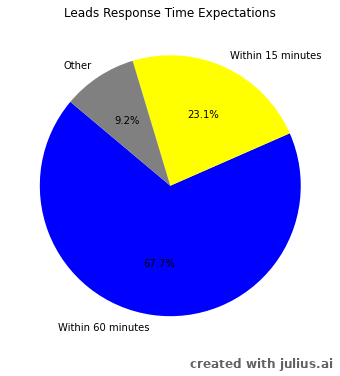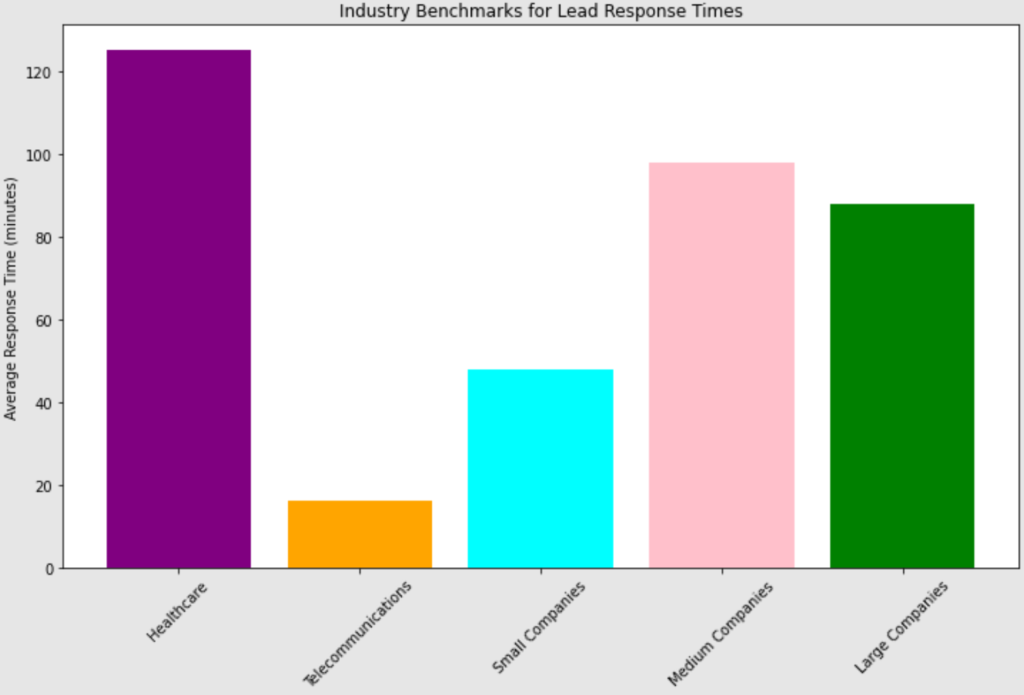Lead Response Time: The Importance of Speed to Lead
In the ever-competitive business landscape, the race to secure a lead is akin to a high-stakes sprint. The baton in this race is the lead response, and the speed at which it's passed can make the difference between winning and losing a deal. This article delves into the critical factor of lead response time, exploring its profound impact on conversion rates, customer experience, and overall business success.
Table of content
Table of Contents
In the ever-competitive business landscape, the race to secure a lead is akin to a high-stakes sprint. The baton in this race is the lead response, and the speed at which it’s passed can make the difference between winning and losing a deal. This article delves into the critical factor of lead response time, exploring its profound impact on conversion rates, customer experience, and overall business success.

Understanding Lead Response Time
Before we delve into the nitty-gritty of lead response time, it’s essential to clarify what it implies. Simply put, lead response time is the duration that passes from the moment a potential customer signals interest in your business to when they receive their first response from your sales team. This timeframe, also referred to as your speed to lead, is instrumental in driving conversions and fostering customer relationships.
Lead Response Time = Lead Processing Time + Representative Response Time
The Golden Rule: Responding within Five Minutes
A common axiom in the realm of lead response is the “five-minute rule.” This principle suggests that reaching out to a lead within the first five minutes dramatically increases your chances of conversion. But is this rule grounded in reality, or is it merely a sales myth?
According to a study by LeadResponseManagement.org, companies are 100 times more likely to connect with a prospect when they reach out within five minutes as opposed to an hour later. Moreover, these companies are 21 times more likely to convert a lead into an opportunity when responding within five minutes or less.
Key Insight: Companies that respond to leads within five minutes are 100 times more likely to connect with them and 21 times more likely to convert them into opportunities.

Why Speed to Lead Matters
In the context of lead response, time is indeed money. The faster you respond to leads, the higher your chances of guiding them down the sales funnel for conversion. This correlation between speed to lead and conversion rates stems from several factors:
- Competitive Advantage: In the digital age, customers have a plethora of options at their fingertips. A swift response can differentiate your brand from competitors, making you the first to engage the lead and build a relationship.
- Customer Expectations: Modern customers expect rapid responses. A study revealed that 88% of leads anticipate responses within 60 minutes of their query, with 30% expecting a response within 15 minutes.
- Increased Engagement: Quick responses keep the lead’s interest piqued and their engagement level high. The longer you take to respond, the more likely the lead’s interest will wane, leading them to explore other options.
However, it’s worth noting that the importance of speed to lead doesn’t diminish the value of delivering quality responses. Precise, helpful, and personalized responses remain integral to fostering strong customer relationships and driving conversions.
Industry Benchmarks for Lead Response Times
While the five-minute rule is the ideal, actual lead response times can vary significantly depending on factors like industry, company size, and lead quality. Here are some industry benchmarks to keep in mind:
- Healthcare: 2 hours and 5 minutes
- Telecommunications: 16 minutes
- Small Companies (1-300 employees): 48 minutes
- Medium Companies (301-2500 employees): 1 hour and 38 minutes
- Large companies (2501+ employees): 1 hour and 28 minutes
While these figures are enlightening, they underscore a crucial point: many industries are not adhering to the five-minute rule. By optimizing your lead response time, you can differentiate your brand and engage new leads effectively.

Calculating and Optimizing Your Lead Response Time
Understanding and calculating your lead response time is crucial for developing effective sales strategies. Here’s a simple formula to calculate lead response time:
1. Time/date of new lead - time/date of follow-up response = Time passed to respond
2. Sum of time passed to respond for all leads / Number of contacts = Average time passed to respond
The time passed can be counted in minutes, hours, or days, depending on your speed to lead. Incorporating this formula into your sales strategy positions your brand to convert new opportunities swiftly.
To actively track and optimize your lead response time, consider creating a dashboard to hold the sales team accountable. This could include metrics such as the average time to follow up, the number of follow-up attempts per lead, and the number of meetings scheduled.
Effective Strategies to Boost Your Speed to Lead
Improving lead response time requires a multi-pronged approach. Here are some strategies to consider:
Invest in Automation
Automation can significantly expedite lead response times. Tools that automatically qualify leads can streamline the sales process, ensuring that leads are promptly attended to. For instance, technology platforms can quickly qualify, score, assign, and even reach out to leads within minutes, thereby increasing your speed to lead.
Establish a Robust Sales Cadence
A well-defined sales cadence – the sequence and frequency of outreach attempts – can significantly enhance lead response times. Consider using multiple communication methods, such as email, phone, text, and social media, and space out your activities to give leads time to consider your brand.
Leverage Chatbots
Chatbots can provide instant, around-the-clock customer service, helping to improve lead response times. A chatbot can greet leads, answer common queries, qualify leads, and even schedule demos or calls, thus streamlining the lead response process.
Foster a Community
Building a community around your brand can also enhance lead response times. Platforms like Slack, Facebook, Reddit, and Circle can provide a space for customers to ask questions and receive prompt responses, acting as an extended customer service team.
Speed to Lead: The Game-Changer in B2B Sales
In conclusion, speed to lead is a game-changer in the hyper-competitive B2B landscape. With customers having more information than ever before, your speed allows you to differentiate and build relationships faster with potential customers. Therefore, prioritizing lead response time in your organization is critical to ensuring sustainable growth.
Remember, the goal is not just to contact leads quickly, but to nurture them with the right content, messaging, and cadence to secure the deal. Analyze your sales team’s current practices, invest in the right technology to automate the process, and watch your lead response time – and conversion rates – improve.


